Including a SNEAK PEEK at X-Men: Grand Design #1…
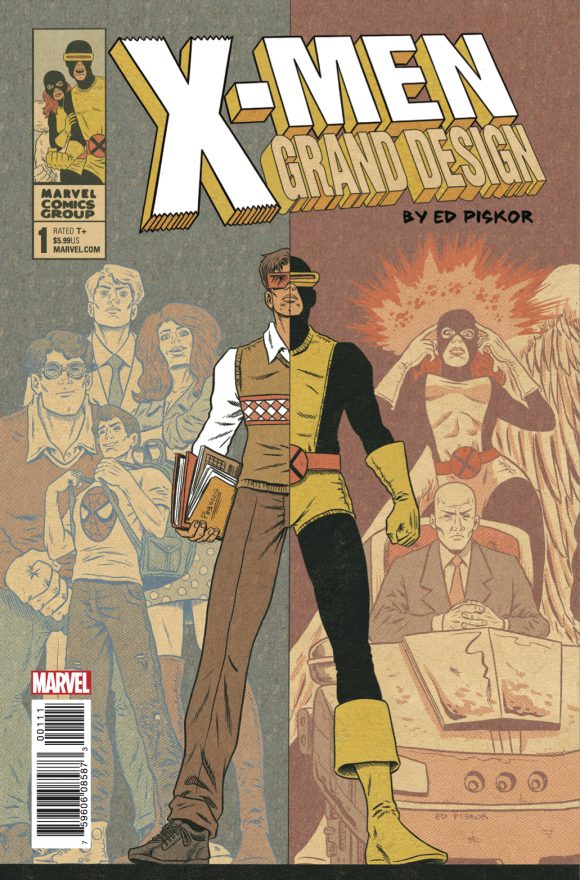
Main cover
—
UPDATED 7/24/18: The second, two-part installment of Ed Piskor’s X-Men: Grand Design kicks off this week. Dubbed Second Genesis, the series moves full-on into the All-New, All-Different era of the ’70s. Perfect time to re-present this piece. — Dan
—
One of the most anticipated comics projects of the year is Ed Piskor’s X-Men: Grand Design, a six-part synthesis of the first 300 issues or so of X-Men into a single, coherent storyline.
It’s a pretty bold concept but then it fits Piskor’s style: His critically acclaimed Hip Hop Family Tree was much the same idea, taking disparate stories, people and visions and melding them into an illuminating and entertaining narrative.
The book is divided into three sets of two issues, published over three years: X-Men: Grand Design; X-Men: Grand Design — Second Genesis; and X-Men: Grand Design — X-Tinction. Piskor is writing, drawing, coloring and lettering all six 40-page issues. Grand Design #1 is out 12/20 and Issue #2 follows quickly on 1/3.
In April, life will sort of imitate art imitating life. Piskor’s Hip Hop Family Tree was collected in an oversize format that aped the look if not quite the size of Marvel’s 1970s treasuries. Marvel will be doing the same with Grand Design: The paperback will be 9 x 13 like Hip Hop Family Tree and will also include X-Men #1 by Lee and Kirby but recolored by Piskor. There will also be a selection of recolored classic pin-ups. (Each collection will feature a classic X-Men comic book recolored by Piskor.)
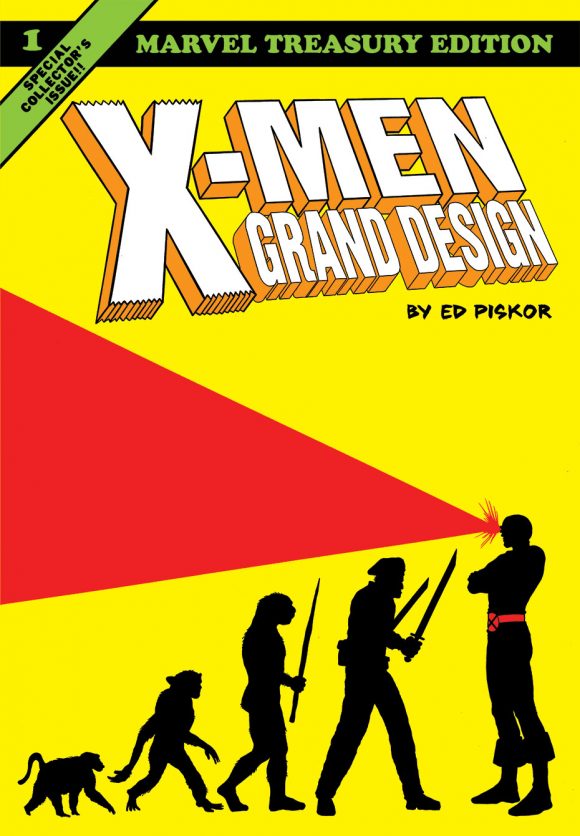
Trade paperback cover
Piskor sat down with G.D. Kennedy, our resident X-Men expert, at New York Comic Con to discuss the project.
Their talk will be published in installments over the next couple of months.
—
By G.D. KENNEDY
I am 15 minutes early to lunch with Ed Piskor and yet he still beats me to the restaurant. I know this while still a block away because I can see Ed standing outside. I have never met him before, but he is instantly recognizable; tall and lanky, he stands a head above the milling crowd, with that head buried under his trademark Gucci mesh-back baseball hat and black Ray-Ban wayfarers, with fluorescent high-tops on his feet, a black portfolio dangling from in his hand.
We end up eating at Clyde’s, just a few blocks away from New York Comic Con, which is an “upscale” sports bar owned by legendary 1970s New York Knick Walt “Clyde” Frazier. One of Frazier’s quirks was a love for terrible, bright suits, and in honor of this, Clyde’s ceiling is decorated in metallic recreations of these suits, a collage in rainbow hues, arcing the full length of the restaurant, a full city block. It is a pastiche of nostalgia, reverence, and an appropriate dose of irony.
Which maybe makes this the perfect place to talk with Ed, given his newest project, X-Men: Grand Design. Grand Design is a novel concept, an attempt to condense approximately 300 issues of X-Men history into six issues, while creating a cohesive and unifying narrative. Which Ed has somehow managed to do, collapsing roughly 50 issues of the original Uncanny X-Men into each Grand Design issue, all while somehow creating a coherent and linear story.
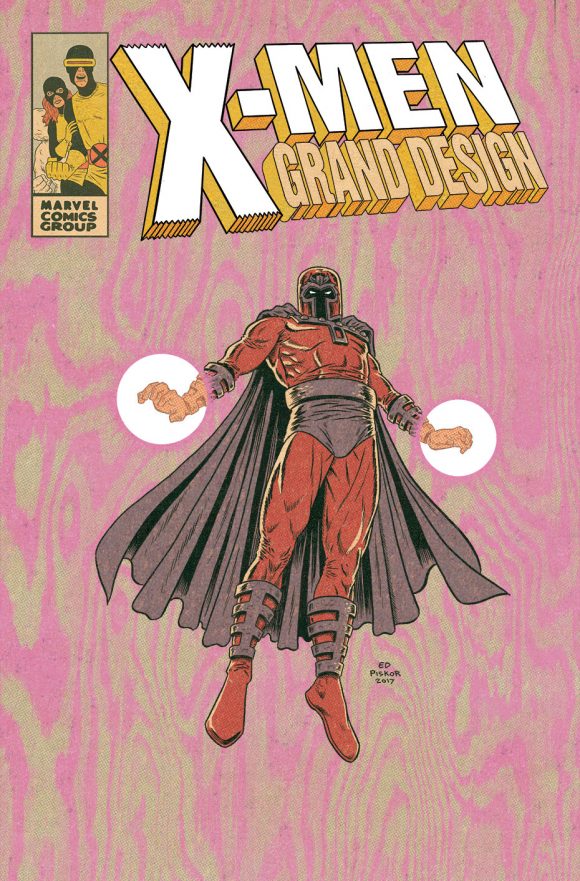
Issue #1 character variant cover
What makes Ed’s role in this project so interesting is that it is, in some ways, a complete diversion from Piskor’s earlier works, but also staying entirely consistent with his roots. Piskor is a cartoonist, and Grand Design is all him, and it plays on the encyclopedic reference theme that his opus Hip Hop Family Tree – a retelling of the history of hip hop – utilized. The influence of 1970s underground comics are immediately recognizable in Ed’s work – the influence of Robert Crumb and his ilk are unavoidable. Ed is not, by any stretch of the imagination, a “company man,” having made books on his own terms for small press throughout his career.
Grand Design, of course, is not any of these things: It is massive press, characters created by someone else, and superheroes. But after just talking with Ed for a few minutes, his love of the source material comes through. He is a devotee of Chris Claremont, loves Art Adams, and unabashedly adores Rob Lifield. He can rattle off X-Men deep cuts without hesitation, and identify obscure artists who lasted for only a handful of issues. Which creates this really compelling tension between Piskor’s past work and this new project.
And yet it all comes together impeccably on Grand Design. There is a nostalgic feel, a reverence for the source material, but Piskor is never too afraid of it to make it his own, to be adventurous with it. His art plays in the ’60s and ’70s styles of the early X-Men, but it is also distinctly modern; it feels more homage than dated. In short, he makes it a fresh and fun story that feels like something familiar, but also completely new.
Our interview lasted about 90 minutes. Here, we talk about the X-Men’s real-life grandmaster, Chris Claremont, with whom Piskor had just spent some time…
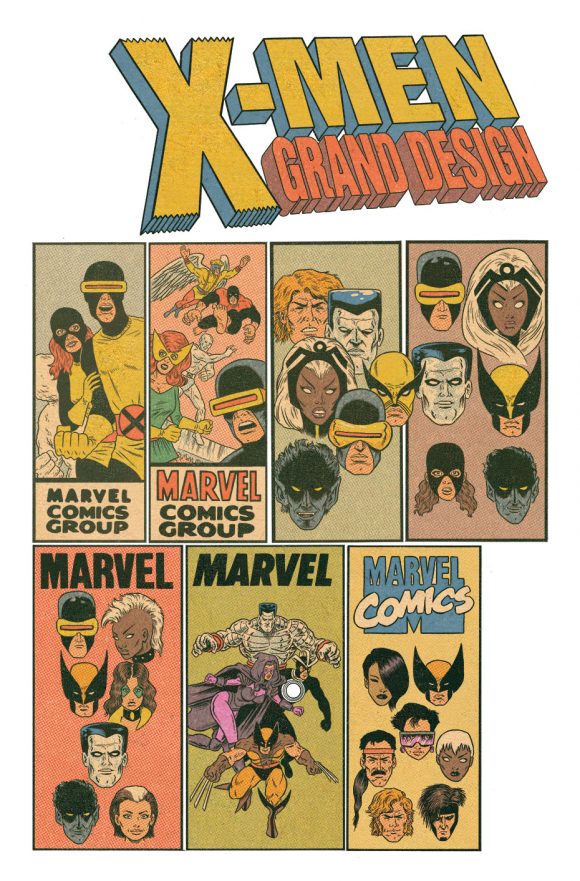
Issue #1 corner box variant
—
G.D. Kennedy: How was your day with Claremont?
Ed Piskor: It was great!
G.D.: What did you guys do?
Ed: Just BS’d. Went to his house. He’s in Brooklyn. Well, I’m quite sure he has a couple places. I went to the Brooklyn place. If you’ve ever seen him talk or anything, he’s a talker. In the same way as his comics read, he’s a very verbose guy. I would give him a couple phrases and he would just riff.
In a lot of ways, I felt like a guy who’s been dating a girl for a couple years and then was going to meet her father for the first time or something. You feel that guilt, like, in your grubby hands!
G.D.: Did you let him read Grand Design?
Ed: Yeah, I sent it to him. It rarely came up in conversation. He shouldn’t like it in a way, you know what I’m sayin’? Because, it’s his baby. You know, I’m . . . touching his creation!
But I sent it to him because I felt like I had to. The way that I was in touch with him initially was we were sent to France at the beginning of this year for Angoulême, the big French comics festival. When I saw he was on the docket, because, you know, nothing is free, they bring you out and they expect certain things. So, I’m, like, let me interview Chris Claremont for his talk, you know? So I did but it was never brought up that I was doing X-Men.
It wasn’t the right venue. I sort of met him right before so I was like, “Why should I steer the conversation in a dumb place 10 minutes before we go in front of everybody?” But his partner, Beth, gave me their card and said, “Whenever you’re in New York, get in touch.” And I was thrilled about that!
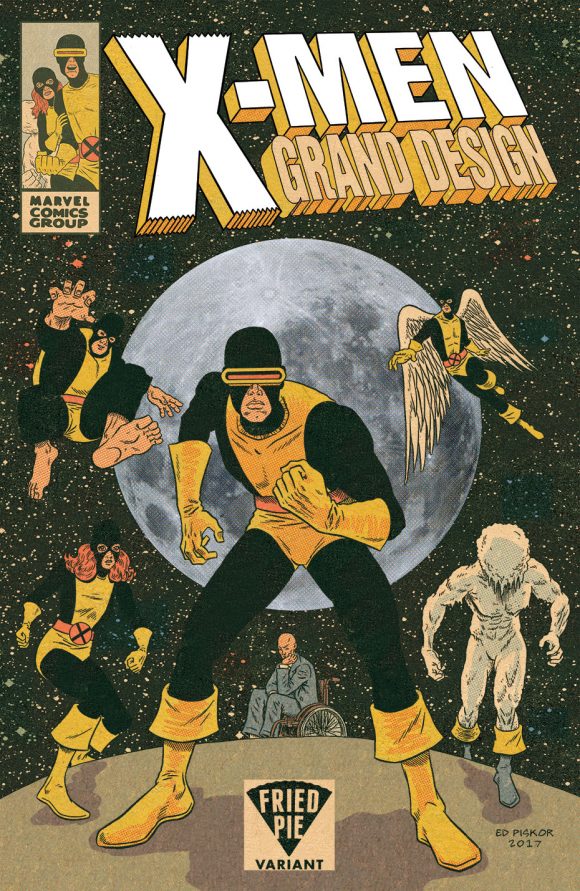
Issue #1 Fried Pie variant cover
G.D.: I think one of the things I like about Grand Design is a unique take on that classic Claremont style, the way it was written. You really captured that.
Ed: Thanks, man. You know, I come from hip hop, and hip hop is about sampling. I don’t suggest that I have the answers to everything so when I see something iconic, when I see something great, done by either Claremont or the artists he’s working with, I’ll just use it.
I’ll basically copy what Jack Kirby did for this one panel. I cannot draw Angel hiding his wings better than Kirby! That initial time that you see him? That’s where that’s from (X-Men #1). I’m using it. He did the best Asteroid M. I’m using it! But then there’s the Neal Adams composition with the Sentinels flying into the sun. I didn’t wholesale steal that one but I did my version of it.
So I’m unapologetic to those ends. My color palette is scanned from old comics. I just had a stack and went through a bunch of comics and there’s like a big sky in this panel so I see a lot of light blue. I wanted to pick up the grit of that old newsprint.
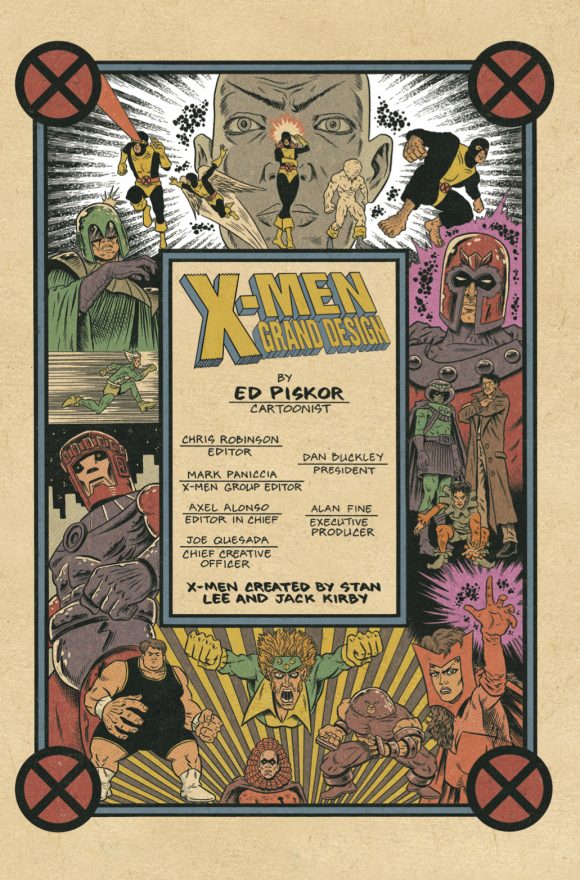
G.D.: And you certainly had it. The pages themselves look like old comic pages.
Ed: I scanned all that. (Indicates a page.) That’s from the margins of Hawkman #8, I believe. I had a weird printing of it where the bottom and top margins… There’s a lot of newsprint that you can see that was kinda untouched so I just went through and scanned that in. But also I’m super-neurotic so I don’t want every page, when you turn it, to have the same texture, so I have 112 different—because that’s how long Hip Hop Family Tree is—pages.
It’s a subtle experience that most readers just won’t probably articulate but I think they notice. Because I see when guys try to do that, with the same page-scan … I see the same dirt on it. I notice.
G.D.: It automatically, literally, frames the whole thing with this feeling of almost nostalgia in a certain way, but also this traditional thing.
Ed: If I had a way to spritz it with some kind of old newsprint smell, I would do that!
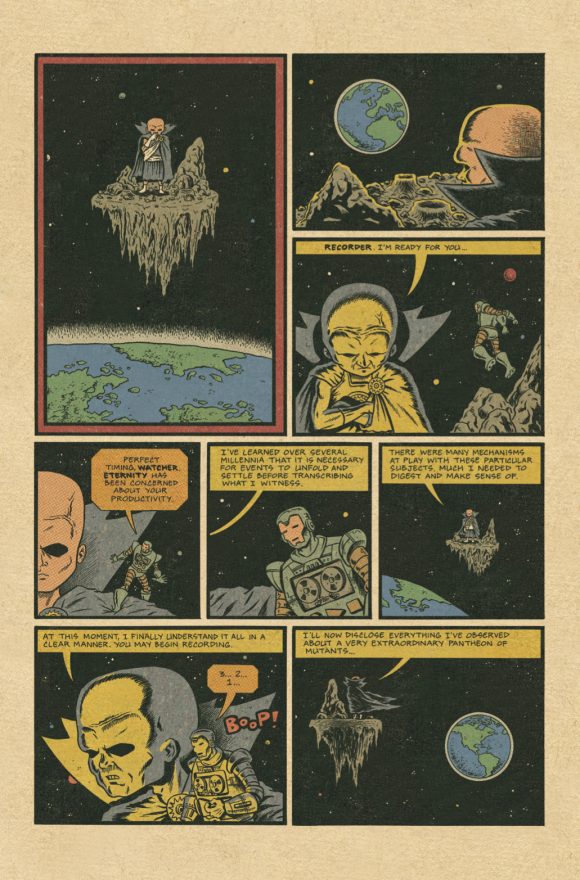
—
G.D. Kennedy: So you’re around the same age I am. I’m goin’ on 36 now.
Ed Piskor: Yeah, 35.
G.D.: So you grew up on that Claremont era stuff, right?
Ed: For sure. And in the ’80s, you had the Classic X-Men and Uncanny X-Men and I was a fan of both. The first Classic X-Men I got was the one with Arcade on the cover. That might have been Issue #20, or something like that. It was a John Byrne issue. Then the first Uncanny issue I had was, like, #157.
But that even comes out before me, so I collected Classic X-Men up to the point where they hit the stuff that I was reading regularly. So I’ve internalized this stuff for three decades, you know?
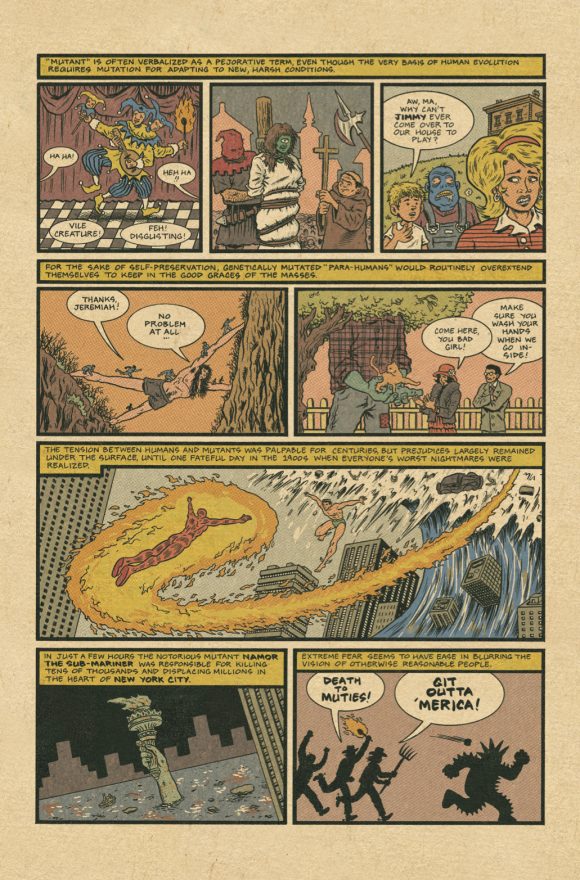
G.D.: So I read the first two issues of Grand Design. How much friggin’ research did you have to do to do that?
Ed: Yeah, like I say, I internalized this stuff for most of my life. I’ve read and re-read the comics a bunch. Of course, the most classic of the run, like the John Byrne stuff, I’ve read that dozens of times, and I’ve read everything else a number of times. Whenever I embark on a new issue I’ll basically read the chunk of comics that will encompass that thing, and then I’ll read different synopses of every other issue.
Marvel put out two rounds of these Index limited series, where it’s just like a cover and an explanation about what’s in the issue. A round of those came out in the … ’80s and a round of those came out when I was in sixth grade, like 1993. I got those because, if you remember, these comics were not accessible. You couldn’t get X-Men #10 to see what the Juggernaut was up to.
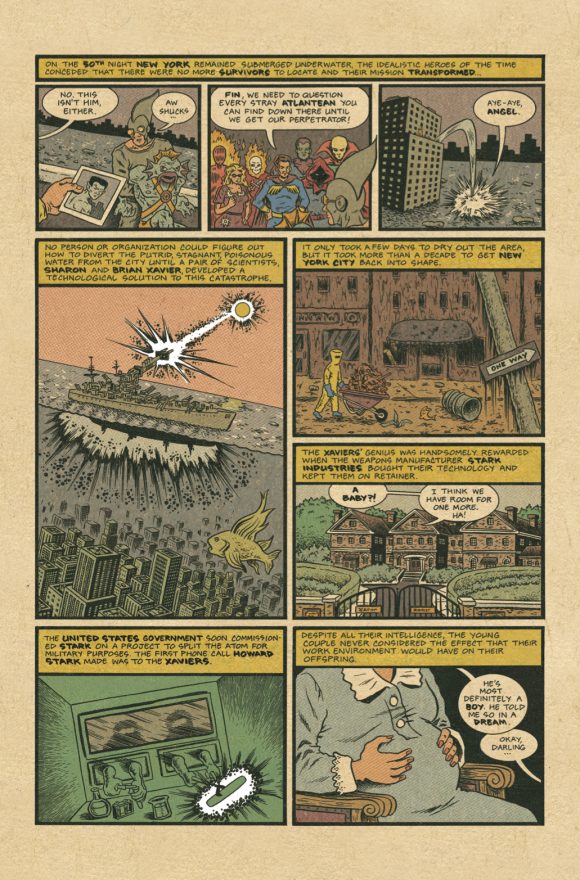
G.D.: Of course not. It’s so much easier now from just eBaying stuff, to reprints, and trades and everything.
Ed: Totally! I would rely on these Index things and I had the idea when I was a kid — I knew what the Marvel method of writing was, where it’s like Stan Lee gives the plot and the artist goes off and breaks it down completely, so I treated those Marvel Index things as the Stan Lee plot. I wanted to redraw every issue of X-Men and try to do it once a month when I was sixth grade, seventh grade.
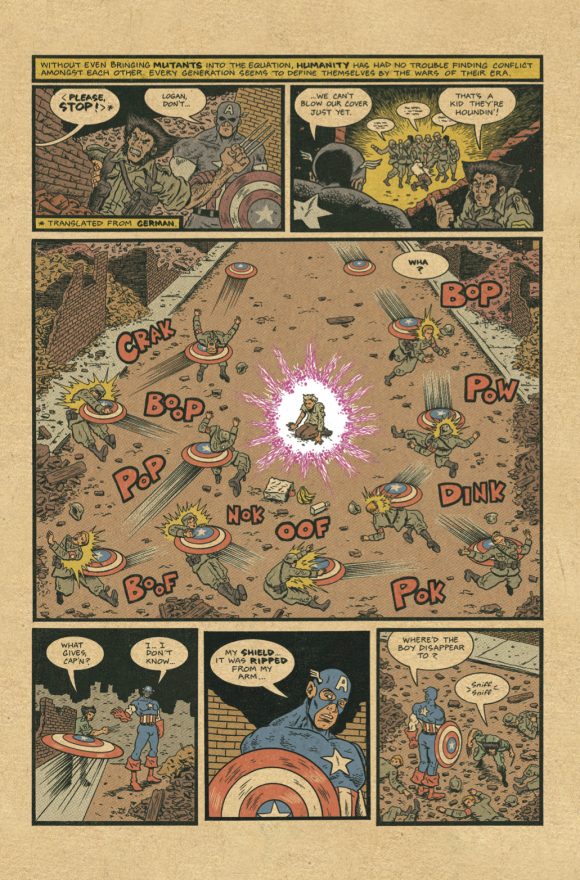
—
G.D.: I noticed there were some elements in Grand Design I didn’t remember – the origin of the Phoenix Force, some of the Mutant Master background. Did you retcon those?
Ed: Yeah. The exercise for me was to build a cohesive narrative, to take all those issues and try to make them all gel. These guys lived in New York as they were creating this stuff. They say that New York was a cheap place to live at a certain point but it was still more expensive than the Midwest so these guys had to make rent. So, yeah, they were on the hamster wheel, man. If they had a chance to do a second draft of some of these scripts, I betcha they would. They didn’t have that luxury.
A lot of that early stuff is just “Villain of the Month” and a lot of these villains are aliens so I have to build in some extraterrestrial something or other very early to try to explain the purpose of these guys. I wanna give every villain a purpose. In a lot of ways, the idea of heroes and villains is silly because it’s subjective. Because it depends on which side of the fence you’re on, you know?
It’s very fashionable to talk about the banality of evil, how you could be a doofus but still do something really terrible. And I think that there’s rarely a guy that just wakes up in the morning and just does bad things a hundred percent of the day.
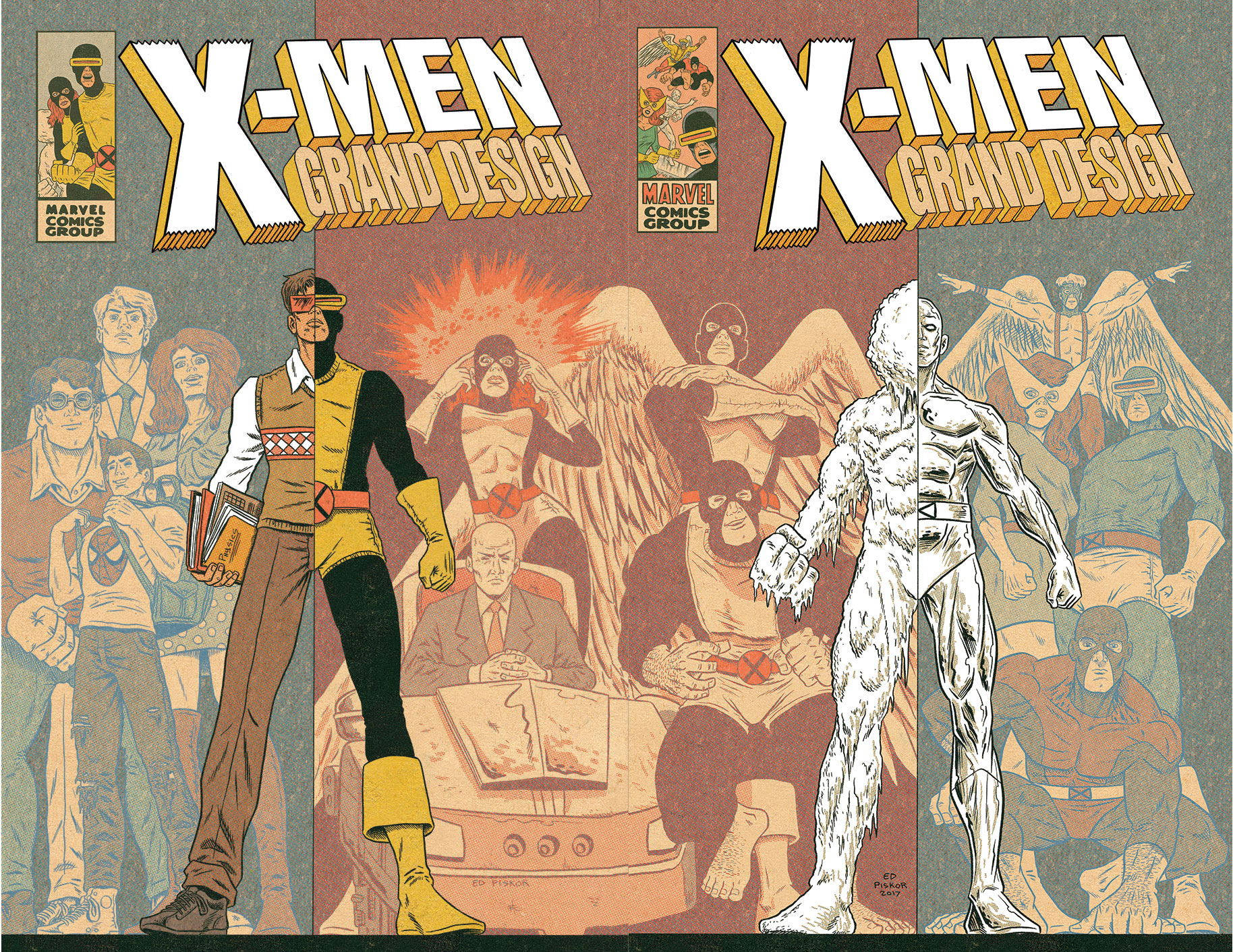
Issue #1 and #2 main covers, connected
G.D.: Everybody’s the hero of their own story at the end of the day.
Ed: Yeah, exactly.
G.D.: One of the things you have to deal with is time. X-Men started in the ’60s and you had civil rights and all of that and then they go through the Reagan era, and no one ages. How are you handling that?
Ed: And before that there’s World War II! So the idea was to never, ever, ever mention a year. Time moves differently in the Marvel Universe is my thing because otherwise, you know, you’re gonna have a very emaciated, translucent, Magneto. You know what I’m sayin’? He’s gonna be the Cryptkeeper! So let’s just take that out of it, man. Some different ways to play with that is, you know, give people computers. Just so that you can’t put your finger on a time frame.

The old and the new old.
G.D.: Yeah, you had the Mutant Rights movement from the very beginning.
Ed: Yeah, I tried to build in the larger Marvel Universe, too. Like, on Page 2, maybe… I start with Namor vs. Human Torch. Namor’s been said to be a mutant and he’s the first Marvel character so he’s the first mutant in comics. The first crossover in comics was Marvel [Mystery] Comics [Nos.] 9 through 11 or something like that, maybe 1939, 1940.
So it was, like, let me build that in and give people a reason to dislike mutants. Straight prejudice. It’s enough as evidence to our real world.
—
X-Men: Grand Design #1 is due 12/20. This interview has been edited and condensed for clarity.
MORE: Piskor picks his favorite X-Men stories. Click here.

Trackbacks/Pingbacks